Air cleaner inlet air temperature control check (Every 24 000 miles (40 000 km) or 2 years)
SOHC and DOHC carburettor
models
1 A vacuum pump will be required to test the
control components.
2 To check the operation of the air temperature control, the engine must be cold.
First observe the position of the flap valve which should be fully closed prior to starting the engine (see illustration).
https://lucklandia.com/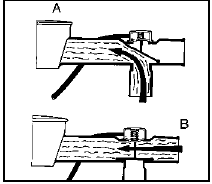
36.2 Air cleaner flap valve operation OHC models
A Flap fully open to admit hot air B Flap fully closed to admit cold air
The position of
the flap can be observed by disconnecting the
cold air inlet hose from the air cleaner spout
and looking into the spout.
3 Start the engine and allow it to idle. Check that the flap is now fully open to admit hot air from the exhaust manifold shroud. If the flap does not fully open, stop the engine and check the vacuum diaphragm unit and heat sensor as follows (see illustrations).
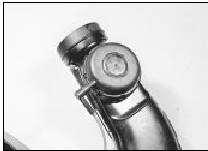
36.3a Air cleaner vacuum diaphragm unit - OHC models
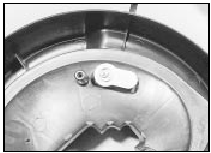
36.3b Air cleaner heat sensor viewed from inside air cleaner - OHC models
4 Working under the base of the air cleaner body, disconnect the diaphragm unit-to-heat sensor vacuum pipe at the sensor end, and connect a vacuum pump to the diaphragm unit.
Apply a vacuum of 100.0 mm (4.0 in) of mercury.
5 If the flap opens, then the heat sensor is faulty and should be renewed. If the flap remains closed, then the diaphragm unit is faulty, and a new air cleaner body will have to be obtained, as the diaphragm unit is not available separately.
6 On completion of the checks, disconnect the vacuum pump, and reconnect the vacuum pipe and cold air inlet hose.
CVH carburettor models
7 To test the unit the engine must initially be
cold. Disconnect the hot air inlet hose from
the air cleaner spout and observe the position
of the flap which should be fully open to allow
only hot air to enter (see illustration).
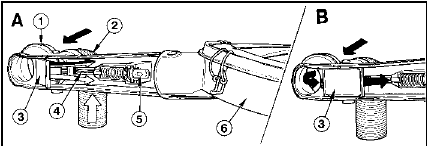
36.7 Air cleaner flap valve operation - CVH models
A Flap fully open to admit hot air
B Flap fully closed to admit cold air
1 Air inlet spout
2 Hot air inlet hose
3 Flap valve
4 Link arm
5 Waxstat
6 Air cleaner body
8 Refit the hose and warm up the engine to normal operating temperature.
9 Disconnect the hot air inlet hose again, and observe the position of the flap which should be fully closed to admit only cold air.
10 If the flap positions are not as described, the waxstat is defective and the complete air cleaner must be renewed as the waxstat is not available separately.
11 On completion of the checks, stop the engine and reconnect the hot air inlet hose.
Pulse air filter element renewal (1.6 litre CVH) (Every 24 000 miles (40 000 km) or 2 years)
1 The pulse-air filter is located at the front left-hand side of the engine compartment.
2 To renew the element, simply unclip the filter cover, then lift out the metal gauze, and withdraw the filter element (see illustration).
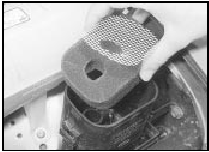
37.2 Withdrawing the pulse-air filter element and gauze - 1.6 litre CVH
models
3 Refitting is a reversal of removal. Ensure that the holes in the gauze and the filter element are positioned on the engine side of the filter housing.
See also:
Spark plug renewal (Every 12 000 miles (20 000 km) or 12 months)
1 The correct functioning of the spark plugs is
vital for the correct running and efficiency of
the engine. It is essential that the plugs fitted
are appropriate for the engine.
2 Make sure that t ...
Rear axle tube (Van models) - removal and refitting
Removal
1 Raise the rear of the vehicle and support it
on stands (see “Jacking and Vehicle
Support”). Remove the rear roadwheels.
2 Support the axle tube on a jack preferably
of trolley type.
3 ...
General description
The braking system is of the dual circuit
hydraulic type with disc brakes at the front
and drum brakes at the rear. A diagonally split
dual circuit hydraulic system is employed in
which each circu ...
